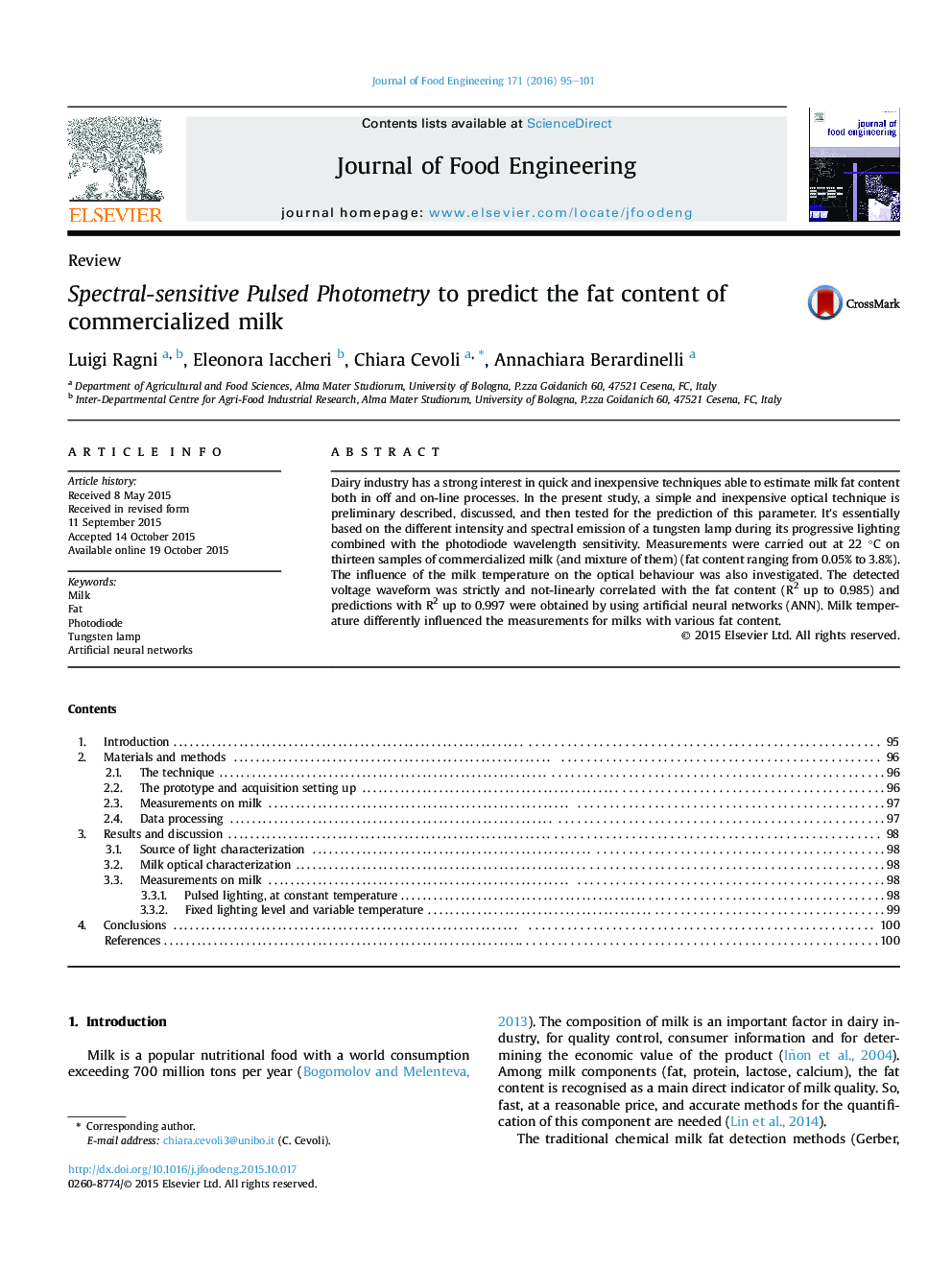| Article ID | Journal | Published Year | Pages | File Type |
|---|---|---|---|---|
| 222801 | Journal of Food Engineering | 2016 | 7 Pages |
•A simple and inexpensive optical apparatus was set up to determine the milk fat content.•The technique is based on the emission of a tungsten lamp during its progressive lighting.•Wavelength photodiode sensitivity is a parameter on which the technique is based.•The signal outputs were exponentially correlated with fat content (R2 up to 0.985).•The artificial neural networks improved the fat content prediction (R2 up to 0.997).
Dairy industry has a strong interest in quick and inexpensive techniques able to estimate milk fat content both in off and on-line processes. In the present study, a simple and inexpensive optical technique is preliminary described, discussed, and then tested for the prediction of this parameter. It's essentially based on the different intensity and spectral emission of a tungsten lamp during its progressive lighting combined with the photodiode wavelength sensitivity. Measurements were carried out at 22 °C on thirteen samples of commercialized milk (and mixture of them) (fat content ranging from 0.05% to 3.8%). The influence of the milk temperature on the optical behaviour was also investigated. The detected voltage waveform was strictly and not-linearly correlated with the fat content (R2 up to 0.985) and predictions with R2 up to 0.997 were obtained by using artificial neural networks (ANN). Milk temperature differently influenced the measurements for milks with various fat content.
